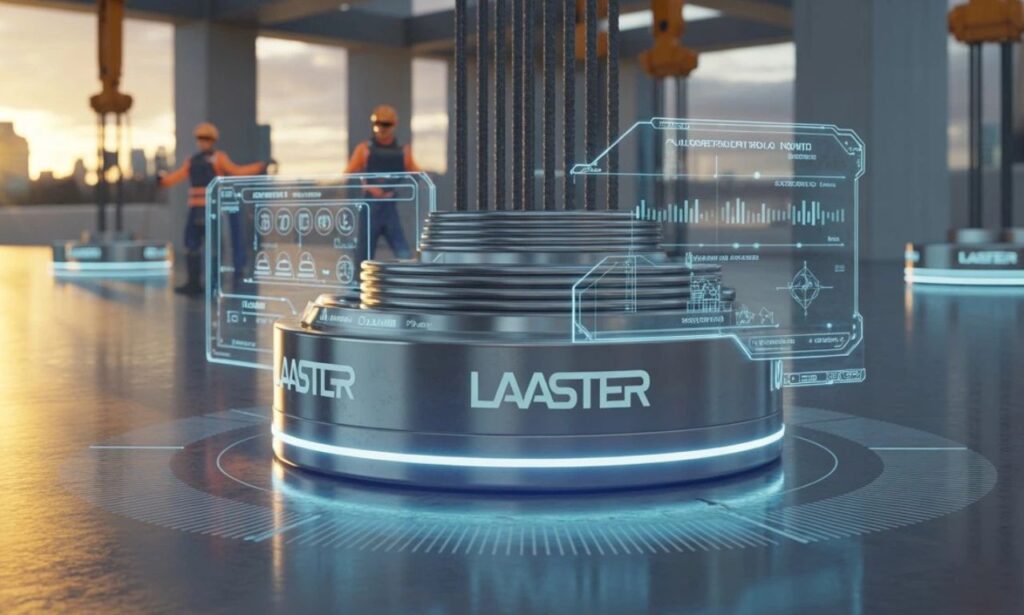Laaster is emerging as a compelling idea in modern technology — not simply as a tool but as a guiding philosophy for systems that operate in real time, adapt smartly, and deliver seamless user experiences. In an age when users expect instant responses, minimal friction, and dynamic adaptability, laaster aims to be the blueprint that meets those expectations.
The concept of laaster revolves around three core pillars: low latency, contextual adaptability, and user-centric minimalism. Rather than just focusing on speed alone, laaster insists that systems must sense, adapt, and respond in ways that feel natural to users. As digital platforms become more complex, laaster helps tie together performance, usability, and intelligence in a cohesive whole.
The origin and evolution of laaster thinking
Although laaster is relatively new as a coined term in technology discourse, its roots lie in long-established concerns: latency in computing, responsive interfaces, and dynamic scaling. Over time, engineers and UX designers have sought to shrink delays and make interactions feel instantaneous. The name “laaster” has been used in recent essays and tech blogs to encapsulate this holistic aspiration.
In its journey so far, laaster thinking has evolved from naive performance tuning into a more mature approach: one that considers context switching, predictive behavior, adaptivity under load, and graceful degradation. It is not enough to make something fast; with , even under failure or strain, the system must degrade smoothly rather than collapse. This nuance sets apart from older “fast system” ideals.
Key principles underlying laaster
Principle of lowest practical latency
Laaster demands that latency — the time between user action and system response — be pushed to the minimum possible while still preserving correctness. A few milliseconds of delay might be trivial in one context but disruptive in another (e.g. live collaboration, gaming, financial trading).
Principle of contextual adaptability
A system built with principles adapts its behavior depending on context: user state, network conditions, device capability. For example, when bandwidth is low, it might gracefully reduce resolution or batch updates rather than simply failing or freezing.
Principle of graceful degradation
Rather than crashing or becoming unusable under load, a laaster-style system deteriorates in controlled, user-friendly ways. Less essential features may pause or be delayed, but core interactions remain responsive.
Principle of predictive intelligence
Laaster systems often anticipate user actions or data flow and prefetch, precompute, or preallocate resources accordingly. This is subtle but helps reduce perceived delay further.
Principle of minimal friction
Interactivity and user flow should feel smooth and intuitive. Transitions, animations, feedback cues, and error handling must not “break the spell.” The system should feel alive rather than mechanical.
How laaster technology works behind the scenes
To realize laaster, systems blend multiple architectural techniques:
-
Edge computing / distributed nodes: placing logic closer to users to reduce round-trip time.
-
Adaptive routing: choosing communication paths dynamically based on congestion or latency.
-
Elastic resource allocation: autoscaling resources (compute, memory, threads) in real time.
-
Incremental updates / diffing: instead of full reloads, updating only changed parts.
-
Speculative execution: doing work ahead of time based on prediction.
-
Fallback strategies: switching to simpler protocols or approximate results when constraints tighten.
-
Observability and introspection: continuously monitoring latency, queue lengths, errors, and switching modes accordingly.
In concert, these mechanisms allow a platform to respond almost instantly, manage bursts of load, and maintain the illusion of fluidity.
Benefits of adopting laaster in digital systems
Why go through the effort of designing systems around laaster? Here are key advantages:
-
Superior user experience: lower latency and smooth behavior foster trust and delight.
-
Better retention and engagement: users stay longer and interact more when the system responds well.
-
Scalable under stress: the system handles sudden surges or heavy load with fewer failures.
-
Flexible degradation: rather than breaking entirely, the system can scale back gracefully.
-
Future readiness: laaster aligns well with trends like edge computing, real-time AI, AR/VR, and immersive interfaces.
It’s not a magic bullet, but for platforms hat depend on interactivity, laaster brings a competitive edge.
Use cases where laaster shines
Real-time collaborative tools
Word editors, design tools, coding environments all benefit from minimal lag, instant sync, and context sensitivity. principles help keep multiple collaborators in sync without noticeable drift.
Interactive gaming & AR/VR
Latency is critical in immersive experiences. helps manage motion, inputs, and visuals in tight loops to avoid disorientation or lag.
Live communication & streaming
Video calls, live chat, interactive broadcasting all demand minimal delay. supports dynamic bandwidth adaptation and fallback modes.
Financial applications
Trading dashboards, live analytics, order books—all require ultra-low latency and robust behavioral degradation under load.
Real-time IoT & edge systems
Sensors, robotics, AR devices, drones, and smart infrastructure benefit when decisions happen close to the source, with logic embedded.
Smart UIs & AI assistants
When UIs adapt contextually (e.g. predictive suggestions, autocomplete, streaming search), strategies help keep interactions smooth and responsive.
Challenges and trade-offs in laaster adoption
-
Complexity of design: building a system that responds, adapts, and degrades gracefully requires expertise.
-
Higher upfront cost: more infrastructure, redundancy, monitoring, and testing are needed.
-
Prediction inaccuracies: speculative or prefetch logic may waste resources if predictions are wrong.
-
Balancing consistency and responsiveness: aggressive latency optimizations risk consistency or correctness.
-
Resource constraints: edge nodes, network variability, and device limits can hamper ambitions.
-
Maintenance overhead: more moving parts mean more things to monitor, debug, and evolve.
Despite challenges, thoughtful trade-offs and incremental adoption make reachable.
Best practices when implementing laaster
-
Start with critical paths: identify the parts of your system where latency matters most (e.g. user input, synchronization).
-
Introduce monitoring early: collect fine-grained metrics on latency, error rates, resource usage.
-
Use fallback modes: never rely on the “best path” always working — always have a simpler mode.
-
Build adaptivity: allow system behavior to shift based on observed conditions.
-
Phase rollout: expose features gradually and test under real load.
-
Test under failure: simulate network drops, overloads, node failures, and evaluate degradation.
-
Keep users in the loop: provide feedback, status cues, and responsive fallbacks so users aren’t confused.
Real world success stories & examples
While “laaster” as a branded term is emergent, many platforms already embody its spirit:
-
Collaboration platforms like Figma or Google Docs maintain near-instant sync across users.
-
Multiplayer games dynamically adjust quality, prefetch data, and anticipate player moves.
-
Streaming services use adaptive bitrate algorithms to reduce buffer delay.
-
Chat systems and live comment feeds push updates incrementally instead of full reloads.
These systems may not call themselves , but they have converged on the same principles.
The future of laaster and evolving relevance
Laaster is not static. As hardware, networking, and AI evolve, will grow in sophistication. Some trends to watch:
-
Edge AI and local models: inference happening right on devices or nearby nodes.
-
Contextual awareness: deeper understanding of user state, environment, and preferences.
-
Cross-modal interaction: blending voice, gesture, AR, and visuals with seamless transitions.
-
Autonomous adaptation: systems rewire internal behavior dynamically without human tuning.
-
Privacy-aware adaptation: adaptivity that respects data privacy and local constraints.
Over time, laaster may become a de facto standard approach for responsive digital systems, much like responsive design or mobile-first.
Contradictions, caution, and realistic perspective
It’s tempting to see as a silver bullet: “just make everything instantaneous.” But that view oversimplifies. There is a tension between latency and consistency, between aggressive optimization and energy/hardware cost, between prediction and waste. A system that chases ever lower latency may overstrain infrastructure or mispredict behavior.
Also, in some contexts, human perception and ergonomics limit how much latency improvement matters. Below a threshold (say 10 ms), further reductions may be imperceptible. You must decide where diminishing returns begin.
Thus, laaster is not about zealously pushing speed at any cost; it’s about smart trade-offs, graceful behavior, and responsiveness that feels human
Why laaster matters today
In today’s digital climate, users expect seamless, instant experiences. Slow or jumpy interfaces can erode trust, drive abandonment, and hurt business metrics. Meanwhile, backend complexity is skyrocketing — distributed systems, microservices, AI, edge logic — so naively layering speed optimizations is no longer enough.
Laaster bridges the gap: it offers a guiding philosophy, not just performance knobs. It compels us to think about how systems should behave under variable conditions, not just how fast they can run in the best case. In that sense, is timely and future-oriented.
FAQs on laaster
What exactly is laaster?
Laaster is a philosophy and architectural approach for building real-time systems that are fast, contextually adaptive, and gracefully degradable under constraints.
Is a product or framework?
No — it’s not a single product or library. Rather, it’s a mindset or design pattern that systems can adopt using a suite of techniques (edge, autoscaling, predictive logic, fallback strategies).
How is different from “real-time” systems?
Traditional real-time systems focus on strict latency and determinism. adds nuance: it insists on adaptability, graceful degradation, and predictive intelligence beyond raw speed.
Do I need AI or ML to build a system?
Not strictly. AI/ML can help with prediction and adaptation, but many aspects of can be implemented with rule-based logic, heuristics, or simpler control systems.
When should I adopt in a project?
Start when latency or user experience is a competitive concern — e.g. in collaborative tools, game engines, financial dashboards, AR/VR, or live UIs. You can progressively retrofit.
What pitfalls should I watch out for?
Avoid over-engineering speculative logic, neglecting fallback paths, underinstrumentation, or optimizing noncritical flows. Always monitor and test under real failure conditions.
Conclusion
Laaster is a promising, evolving idea in the design of digital systems — one that shifts focus from raw speed to responsiveness, contextual intelligence, and graceful behavior under stress. When implemented well, can elevate user experience, improve robustness, and future-proof systems in a world where user expectations are ever higher.
That said, laaster is not a silver bullet. It demands care, measurement, and thoughtful trade-offs. But for teams willing to invest in adaptability, observability, and graceful design, offers a powerful blueprint for next-generation system architecture.







